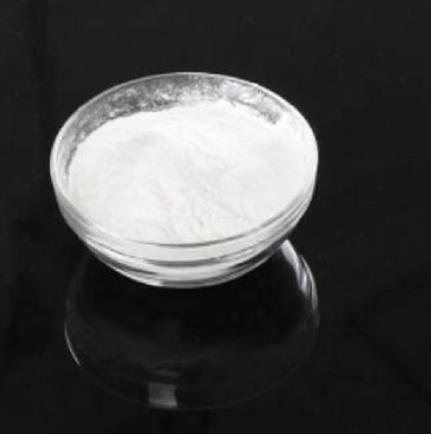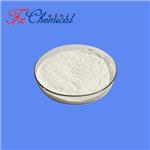Lithium Hexafluorophosphate: A Crucial Compound in Modern Electrochemistry
Sep 11,2024
Introduction
Lithium hexafluorophosphate has emerged as a cornerstone in the field of electrochemistry, particularly within the context of lithium-ion batteries. Its critical role in the development of energy storage solutions has garnered widespread attention in both academic and industrial circles. As the world shifts towards sustainable energy sources, the demand for efficient, safe, and high-performance batteries is on the rise, making Lithium hexafluorophosphate an indispensable compound in this pursuit.

Figure 1 Characteristics of Lithium hexafluorophosphate
Properties of Lithium Hexafluorophosphate
Lithium hexafluorophosphate is a white crystalline powder that is highly soluble in organic solvents such as carbonates, ethers, and esters, which are commonly used as electrolyte solvents in lithium-ion batteries. It is hygroscopic, meaning it readily absorbs moisture from the air, which can lead to the generation of hydrofluoric acid (HF) upon decomposition. This property necessitates careful handling and storage to maintain its efficacy and safety.
Chemically, Lithium hexafluorophosphate is composed of lithium (Li⁺) and hexafluorophosphate (PF₆⁻) ions. The hexafluorophosphate anion is particularly stable due to its symmetrical structure and strong P-F bonds, which contribute to the overall stability of the compound. However, the presence of Li⁺ ions also plays a vital role in its application within lithium-ion batteries, as these ions are involved in the electrochemical reactions that occur during the charging and discharging processes.
The thermal stability of lithium hexafluorophosphate is another important consideration. It decomposes at temperatures above 200°C, releasing toxic and corrosive gases such as phosphorus pentafluoride (PF₅) and hydrofluoric acid. This decomposition behavior is a critical factor in the design of battery safety protocols, as it underscores the need for proper thermal management in lithium-ion battery systems.
Composition of Lithium Hexafluorophosphate
Lithium hexafluorophosphate is composed of a lithium cation (Li⁺) and a hexafluorophosphate anion (PF₆⁻). The hexafluorophosphate anion consists of one phosphorus atom surrounded by six fluorine atoms in an octahedral configuration. This structure is characterized by strong covalent bonds between the phosphorus and fluorine atoms, which contribute to the overall stability and inertness of the anion.
The synthesis of lithium hexafluorophosphate typically involves the reaction of lithium fluoride (LiF) with phosphorus pentachloride (PCl₅) and hydrogen fluoride (HF). This process yields Lithium hexafluorophosphate as the primary product, along with by-products that need to be carefully managed due to their hazardous nature. The purity of the synthesized Lithium hexafluorophosphate is crucial, as impurities can negatively impact the performance of lithium-ion batteries by introducing unwanted side reactions.
Applications of Lithium Hexafluorophosphate
The most prominent application of lithium hexafluorophosphate is in the production of electrolytes for lithium-ion batteries. These batteries are ubiquitous in modern life, powering everything from smartphones and laptops to electric vehicles and renewable energy storage systems. The electrolyte solution in a lithium-ion battery plays a crucial role in facilitating the movement of lithium ions between the anode and cathode during the charge and discharge cycles.
Lithium hexafluorophosphate serves as the lithium salt in the electrolyte, providing the essential Li⁺ ions needed for the electrochemical reactions that occur within the battery. The hexafluorophosphate anion (PF₆⁻) is highly stable, which helps prevent unwanted chemical reactions within the electrolyte, thereby enhancing the overall stability and lifespan of the battery.
Beyond its role in batteries, lithium hexafluorophosphate is also used in other electrochemical applications, such as in the synthesis of specialty fluorinated compounds and as a reagent in certain organic reactions. Its unique properties make it a valuable component in the development of advanced materials and chemical processes.
Storage and Handling of Lithium Hexafluorophosphate
Due to its hygroscopic nature, lithium hexafluorophosphate must be stored under strict conditions to prevent moisture absorption. It is typically stored in airtight containers made of materials resistant to corrosion, such as polyethylene or Teflon-lined vessels. These containers should be kept in a cool, dry environment, away from sources of heat and moisture. In industrial settings, storage areas are often equipped with dehumidifiers or inert gas purging systems to maintain low humidity levels and prevent the degradation of Lithium hexafluorophosphate.
When handling lithium hexafluorophosphate, safety protocols must be strictly followed to minimize the risk of exposure to toxic decomposition products. Personal protective equipment (PPE) such as gloves, safety goggles, and lab coats should be worn at all times. In case of accidental exposure, immediate measures should be taken, including flushing the affected area with copious amounts of water and seeking medical attention if necessary.
In the event of a spill, it is critical to clean up the material promptly and safely, using appropriate neutralizing agents and disposal methods as per regulatory guidelines. Lithium hexafluorophosphate waste must be handled as hazardous waste, with disposal carried out by certified facilities to prevent environmental contamination.
[1] LIU J, LI X, WANG Z, et al. Preparation and characterization of lithium hexafluorophosphate for lithium-ion battery electrolyte[J]. Transactions of Nonferrous Metals Society of China, 2010, 20(2): 344-348.
[2] Song Z, Zheng L, Cheng P, et al. Taming the chemical instability of lithium hexafluorophosphate-based electrolyte with lithium fluorosulfonimide salts[J]. Journal of Power Sources, 2022, 526: 231105.
References:
[1] JIAN-WEN LIU. Preparation and characterization of lithium hexafluorophosphate for lithium-ion battery electrolyte[J]. Transactions of Nonferrous Metals Society of China, 2010, 20 2: 171-348. DOI:10.1016/S1003-6326(09)60144-8.
[2] ZIYU SONG . Taming the chemical instability of lithium hexafluorophosphate-based electrolyte with lithium fluorosulfonimide salts[J]. Journal of Power Sources, 2022, 526. DOI:10.1016/j.jpowsour.2022.231105.
- Related articles
- Related Qustion
- The importance of lithium hexafluorophosphate in the chemical industry Mar 18, 2022
Lithium hexafluorophosphate is an inorganic substance with the chemical formula LiPF6, white crystal or powder.
Supplementation with pyridoxal 5'-phosphate monohydrate can synthesize neurotransmitters such as dopamine and serotonin, maintaining a healthy nervous system.....
Nov 4,2025Biochemical EngineeringCyanoacetamide has garnered significant attention in the field of chemistry due to its wide range of applications and unique properties.....
Sep 11,2024APILithium hexafluorophosphate
21324-40-3You may like
Lithium hexafluorophosphate manufacturers
- Lithium hexafluorophosphate
-

- $0.00 / 1KG
- 2025-12-19
- CAS:21324-40-3
- Min. Order: 1KG
- Purity: 98%min
- Supply Ability: 30tons/month
- Lithium hexafluorophosphate
-

- $0.00 / 1KG
- 2025-12-19
- CAS:21324-40-3
- Min. Order: 1KG
- Purity: 98% min
- Supply Ability: 200T
- Lithium hexafluorophosphate
-

- $10.00 / 1KG
- 2025-12-11
- CAS:21324-40-3
- Min. Order: 1KG
- Purity: 99%
- Supply Ability: 10 mt






